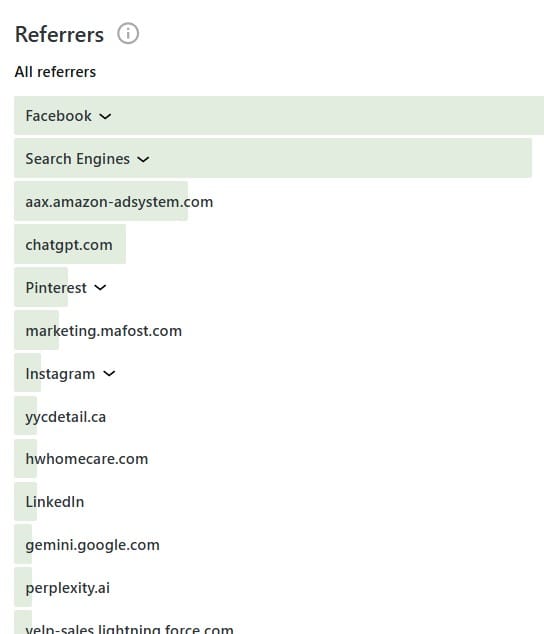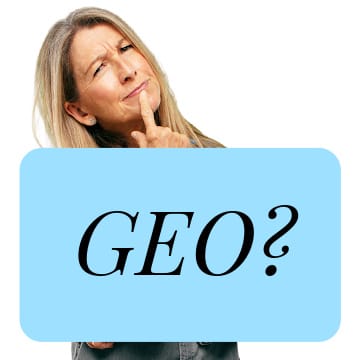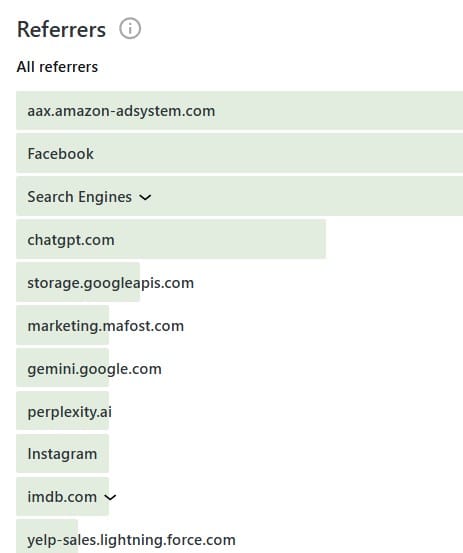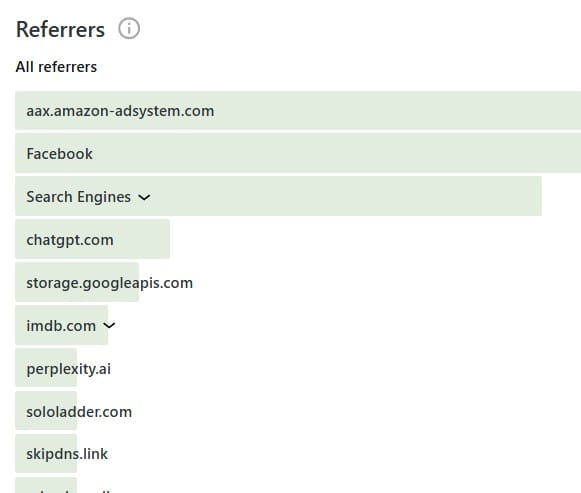Timeframe: June 2, 2025 – September 2, 2025
Key Stats from the Case Study
- GEO from spring 2025 resulted in organic AI-search traffic in Q3 2025.
- The use of Microsoft Ads accelerated the AI-search traffic in Aug-Sep.2025.
- We saw significant ranking increases on Perplexity and ChatGPT.
How Our GEO Paired With Microsoft Ads is Cracking the AI Search Recipe
Challenge of Generative AI Search Traffic
With the rise of generative AI platforms like ChatGPT, Perplexity, and Gemini, the landscape of search is rapidly evolving. Unlike traditional search engines, these platforms provide synthesized, conversational answers, often bypassing websites entirely. Mafost Marketing recognized this shift and began implementing a cutting-edge strategy known as Generative Engine Optimization (GEO) to ensure its content was being found and cited by these new “answer engines.”
Initial GEO efforts, which focused on structuring content for AI readability and semantic understanding, created some traction. The website began to see organic referral traffic from these platforms. However, the traffic remained a small percentage of the total. The question was: how could we accelerate this growth and truly establish the website as an authority in the AI-driven search ecosystem?

Strategy: The Catalyst Effect of Microsoft Ads
The hypothesis was that while GEO laid the groundwork, a strong, real-time signal was needed to prove the content’s freshness and authority to AI models. We believed that a paid advertising campaign, specifically on Microsoft Ads, could act as this catalyst. The strategy was two-fold:
- Phase 1 (Organic GEO): Continue to optimize all website content for generative AI by implementing entity optimization, structured data, and authority signals.
- Phase 2 (Paid Acceleration): Launch a targeted Microsoft Ads campaign to drive paid traffic to the newly optimized pages. The goal was not just conversions, but to use the ad traffic as a powerful “engagement signal” for the AI platforms.

What is GEO?
GEO stands for Generative Engine Optimization—a strategic evolution of SEO designed for the age of AI-powered search.
Instead of optimizing content just for traditional search engines like Google, GEO focuses on making your content discoverable, understandable, and citable by generative AI models like ChatGPT, Gemini, Perplexity, and Google’s AI Overviews
Results
The results from a three-month period (June 2 – Sept 2) were broken down into a “before and after” analysis, comparing the overall traffic sources with a specific focus on the last 7 days immediately following the ad launch.

Before Microsoft Ads (June 2 – Sept 2):
- The Q3 traffic report showed a healthy, but modest, amount of traffic from generative AI sources.
- Platforms like chatgpt.com, perplexity.ai, and gemini.google.com were present on the list, demonstrating that the foundational GEO work was effective.

After Microsoft Ads (The Last 7 Days):
- In just one week, the impact of the paid campaign was dramatic and undeniable.
- The generative AI traffic sources were no longer a small fraction; they had accelerated to become top-tier referrers.
- chatgpt.com and perplexity.ai surged to the very top of the traffic sources list, competing with paid ads and direct traffic.
The paid traffic from Microsoft Ads (aax.amazon-adsystem.com) acted as a powerful signal, triggering the AI platforms to re-evaluate and prioritize the content that was receiving active, engaged traffic.
Conclusion
This case study proves that the future of search is a synergistic blend of organic and paid strategies. Traditional SEO and content strategies are no longer enough to dominate in the age of generative AI. By combining meticulous Generative Engine Optimization with a targeted paid advertising campaign, Mafost Marketing created a powerful “Catalyst Effect” that transformed AI search traffic from a minor factor into a primary, sustainable growth channel.
This demonstrates a clear, data-backed roadmap for any business looking to get ahead of the curve and win in the age of generative AI.
See Also: How Ads Impact Organic Traffic Growth
